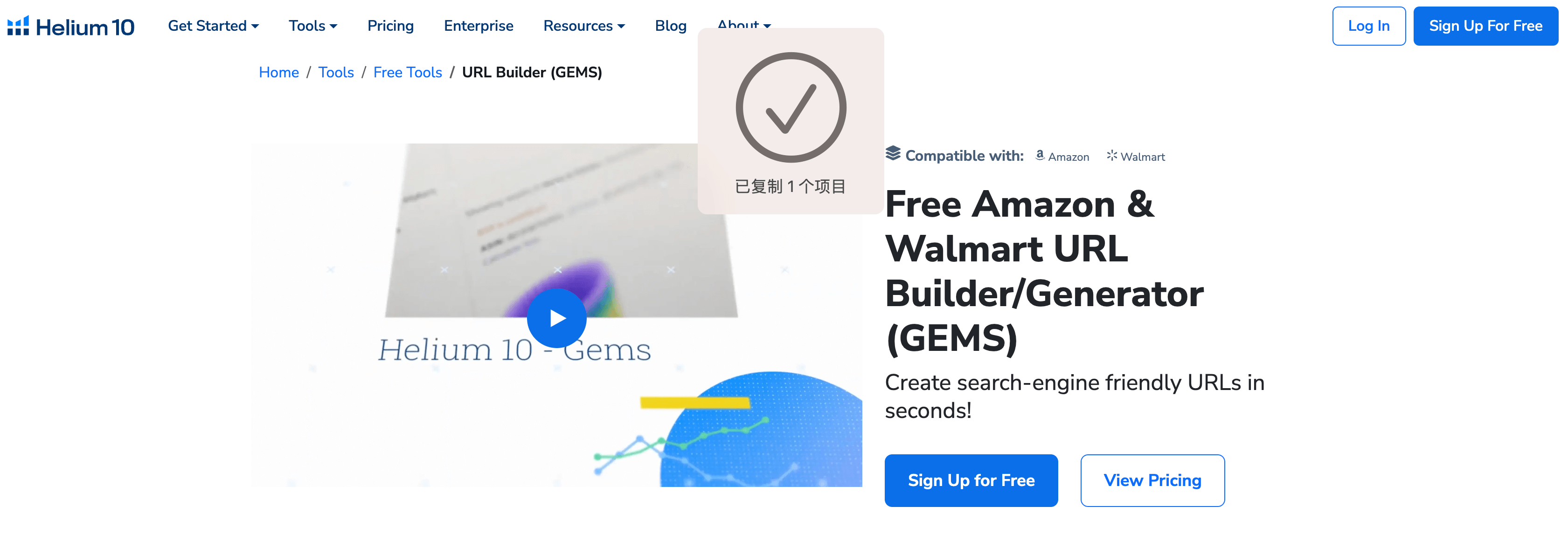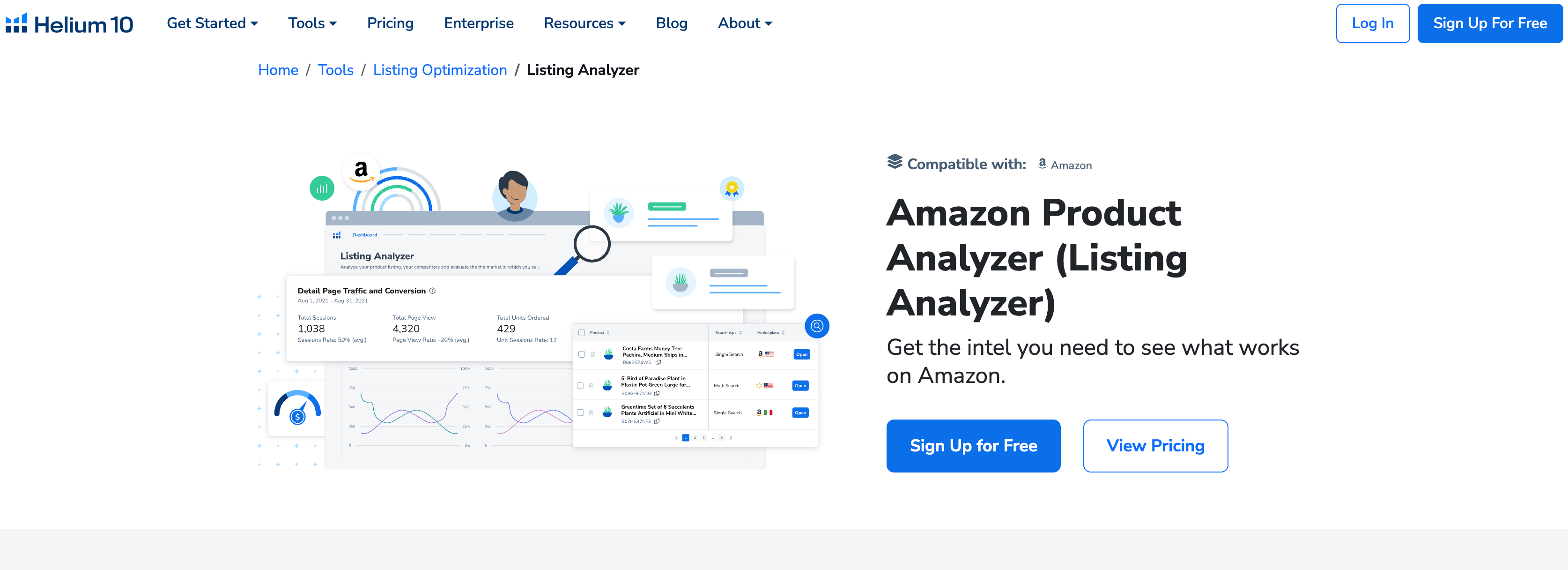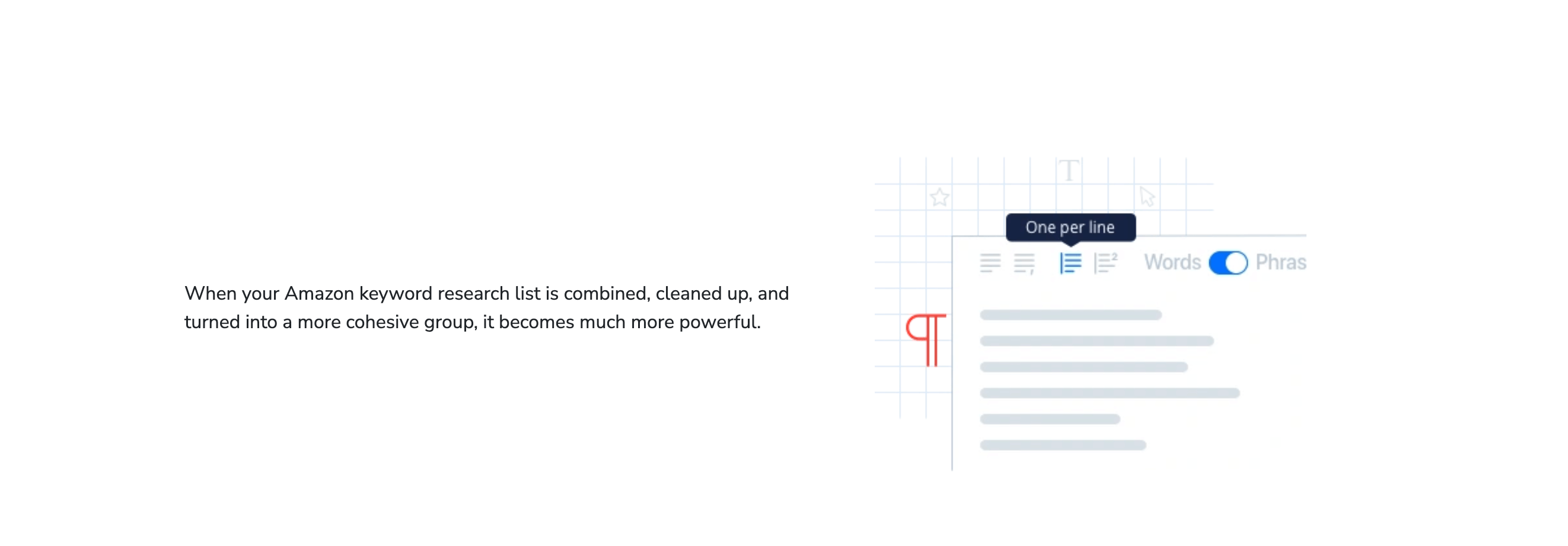Helium 10 Magnet vs. Cerebro: When to Use Each Keyword Tool
Keyword research is the backbone of any successful Amazon selling strategy. It helps you understand what customers are searching for, optimize your product listings, and drive targeted traffic to your listings. Helium 10, a leading software suite for Amazon sellers, offers two powerful tools for keyword research: Magnet and Cerebro. While both tools are designed to help you find and analyze keywords, they serve different purposes and are best used at different stages of your keyword research process. In this guide, we’ll explore the key differences between Helium 10 Magnet and Cerebro, when to use each tool, and how to integrate them into your overall strategy for maximum results. By the end, you’ll have a clear understanding of how to leverage these tools to dominate your niche and grow your Amazon business. 🚀🔍
1. Understanding Helium 10: The Ultimate Keyword Research Suite
Helium 10 is a comprehensive software platform designed to help Amazon sellers succeed in the competitive e-commerce landscape. Founded in 2015 by Manny Coats, Helium 10 has become one of the most trusted tools for Amazon sellers, offering a wide range of features for product research, keyword tracking, listing optimization, and more. The platform is particularly popular for its keyword research tools, which include Magnet and Cerebro. 🌐📊
Magnet and Cerebro are both powerful tools, but they serve different purposes. Magnet is designed for broad keyword discovery, helping you find new keyword ideas and explore untapped opportunities. Cerebro, on the other hand, is focused on deep keyword analysis, allowing you to dissect the keywords used by competitors and optimize your listings accordingly. Understanding when and how to use each tool is key to building a successful keyword strategy. In this section, we’ll dive deeper into the functionalities of Magnet and Cerebro and explore their unique strengths. 🛠️📈

2. Helium 10 Magnet: Discovering New Keyword Opportunities
Helium 10 Magnet is a keyword discovery tool designed to help you find new keyword ideas and explore untapped opportunities. It’s particularly useful for broad keyword research, allowing you to generate a large list of potential keywords based on a seed keyword or phrase. Magnet is ideal for sellers who are just starting their keyword research or looking to expand their keyword portfolio. 🌟🔍
2.1. How Magnet Works
Magnet uses advanced algorithms to generate keyword suggestions based on a seed keyword. Simply enter a keyword related to your product, and Magnet will provide a list of related keywords along with metrics like search volume, competition level, and more. This makes it easy to identify high-potential keywords that you might not have considered otherwise. 🖥️📊
2.2. Key Features of Magnet
Magnet offers several key features that make it a powerful tool for keyword discovery. These include:
- Search Volume: Shows how often a keyword is searched on Amazon.
- Competition Level: Indicates how difficult it is to rank for a keyword.
- Trend Analysis: Highlights keywords with growing or declining popularity.
- Keyword Variations: Provides alternative versions of your seed keyword.
2.3. When to Use Magnet
Magnet is best used during the early stages of keyword research. It’s ideal for:
- Generating a large list of keyword ideas.
- Exploring new niches and product categories.
- Identifying long-tail keywords with low competition.
2.4. Tips for Using Magnet Effectively
To get the most out of Magnet, follow these tips:
- Start with a broad seed keyword to generate a wide range of suggestions.
- Focus on keywords with high search volume and low competition.
- Use the trend analysis feature to identify emerging keywords.
2.5. Exporting and Saving Your Results
Once you’ve generated a list of keywords, export and save your results for further analysis. This allows you to organize your keyword ideas and integrate them into your overall strategy. 💾📂

3. Helium 10 Cerebro: Analyzing Competitor Keywords
Helium 10 Cerebro is a deep keyword analysis tool designed to help you dissect the keywords used by competitors. It’s particularly useful for competitive research, allowing you to uncover the keywords that are driving traffic to your competitors’ listings. Cerebro is ideal for sellers who want to optimize their listings and improve their search rankings. 🕵️📊
3.1. How Cerebro Works
Cerebro allows you to analyze the keywords used by a specific product listing. Simply enter the ASIN (Amazon Standard Identification Number) of a competitor’s product, and Cerebro will provide a detailed report of the keywords associated with that listing. This includes metrics like search volume, keyword difficulty, and more. 🖥️🔍
3.2. Key Features of Cerebro
Cerebro offers several key features that make it a powerful tool for competitive research. These include:
- Keyword Rankings: Shows where a competitor’s product ranks for specific keywords.
- Search Volume: Indicates how often a keyword is searched on Amazon.
- Keyword Difficulty: Measures how difficult it is to rank for a keyword.
- Sponsored Keywords: Highlights keywords used in paid ads.
3.3. When to Use Cerebro
Cerebro is best used during the later stages of keyword research. It’s ideal for:
- Analyzing competitor listings and identifying their top-performing keywords.
- Optimizing your product listings for high-traffic keywords.
- Identifying gaps in your keyword strategy and improving your rankings.
3.4. Tips for Using Cerebro Effectively
To get the most out of Cerebro, follow these tips:
- Analyze multiple competitor listings to get a comprehensive view of the market.
- Focus on keywords with high search volume and low difficulty.
- Use the sponsored keywords feature to identify paid ad opportunities.
3.5. Exporting and Saving Your Results
Once you’ve analyzed competitor keywords, export and save your results for further analysis. This allows you to integrate the insights into your listing optimization strategy. 💾📂

4. Magnet vs. Cerebro: Key Differences and Use Cases
While both Magnet and Cerebro are powerful keyword research tools, they serve different purposes and are best used at different stages of your strategy. Here’s a breakdown of their key differences and when to use each tool. 📊🔍
4.1. Purpose
- Magnet: Broad keyword discovery.
- Cerebro: Deep keyword analysis.
4.2. Best Use Case
- Magnet: Early-stage keyword research.
- Cerebro: Competitive research and listing optimization.
4.3. Key Features
- Magnet: Search volume, competition level, trend analysis.
- Cerebro: Keyword rankings, keyword difficulty, sponsored keywords.
4.4. Output
- Magnet: A large list of keyword ideas.
- Cerebro: Detailed insights into competitor keywords.
4.5. Integration
Both tools can be integrated into your overall keyword strategy, with Magnet used for discovery and Cerebro used for optimization. 🛠️📈

5. Integrating Magnet and Cerebro into Your Keyword Strategy
To maximize the effectiveness of your keyword research, it’s important to integrate both Magnet and Cerebro into your strategy. Here’s how to do it. 🚀📊
5.1. Start with Magnet for Keyword Discovery
Use Magnet to generate a large list of keyword ideas. Focus on keywords with high search volume and low competition. 🌟🔍
5.2. Analyze Competitors with Cerebro
Use Cerebro to analyze the keywords used by competitors. Identify their top-performing keywords and look for gaps in your strategy. 🕵️📊
5.3. Optimize Your Listings
Use the insights from Cerebro to optimize your product listings. Incorporate high-traffic keywords into your title, bullet points, and description. 📝📈
5.4. Monitor Performance
Use Helium 10’s Alerts tool to monitor your keyword rankings and make adjustments as needed. 📊🚀
5.5. Repeat the Process
Keyword research is an ongoing process. Regularly use Magnet and Cerebro to stay ahead of the competition and keep your listings optimized. 🔄📊

6. Common Mistakes to Avoid in Keyword Research
While Helium 10’s tools can help you succeed in keyword research, there are common mistakes that sellers should avoid. Here are some tips to keep in mind. 🚫💡
6.1. Focusing Only on High-Volume Keywords
High-volume keywords are important, but they’re often highly competitive. Don’t overlook long-tail keywords with lower search volume but higher conversion potential. 📊📦
6.2. Ignoring Keyword Difficulty
Keyword difficulty is a crucial factor in ranking. Use Cerebro to identify keywords with low difficulty and high potential. 🎯📈
6.3. Neglecting Competitor Analysis
Competitor analysis is key to understanding the market. Use Cerebro to uncover your competitors’ strategies and identify opportunities. 🕵️📊
6.4. Overloading Your Listings with Keywords
While keywords are important, overloading your listings can hurt readability and conversions. Focus on incorporating keywords naturally. 📝🌟
6.5. Failing to Monitor Performance
Keyword rankings can change over time. Use Helium 10’s Alerts tool to monitor your performance and make adjustments as needed. 📊🚀

7. Future Trends in Keyword Research for Amazon Sellers
As the e-commerce landscape evolves, so do the strategies for keyword research. Here’s how Helium 10’s tools are adapting to future trends. 🌐📈
7.1. The Rise of AI in Keyword Research
AI is transforming keyword research, making tools like Magnet and Cerebro even more powerful. In the future, expect more advanced features like predictive analytics and automated keyword suggestions. 🤖🔍
7.2. Increased Focus on Long-Tail Keywords
Long-tail keywords are becoming increasingly important as competition grows. Use Magnet to identify these opportunities and stay ahead of the curve. 📊📦
7.3. The Impact of Voice Search
Voice search is changing the way customers search for products. Use Helium 10’s tools to identify voice-friendly keywords and optimize your listings accordingly. 🗣️📊
7.4. The Importance of Localized Keywords
As Amazon expands globally, localized keywords are becoming more important. Use Magnet and Cerebro to identify keywords tailored to specific regions. 🌍📈
7.5. Staying Updated with Industry Trends
The e-commerce industry is constantly evolving. Use Helium 10’s tools to stay updated with the latest trends and adapt your strategy accordingly. 📊🚀

8. Final Thoughts: Mastering Keyword Research with Helium 10
Helium 10’s Magnet and Cerebro are indispensable tools for Amazon sellers, offering everything you need to succeed in keyword research. By understanding when and how to use each tool, you can build a comprehensive keyword strategy that drives traffic, improves rankings, and boosts sales. Whether you’re just starting out or looking to optimize your existing listings, Helium 10 has the tools and resources to help you achieve your goals. Start using Magnet and Cerebro today, and take your Amazon business to new heights! 🚀📊🌟
Table: Magnet vs. Cerebro Comparison
| Feature | Magnet | Cerebro |
|---|---|---|
| Purpose | Broad keyword discovery | Deep keyword analysis |
| Best Use Case | Early-stage keyword research | Competitive research |
| Key Features | Search volume, competition level | Keyword rankings, difficulty |
| Output | Large list of keyword ideas | Detailed competitor insights |
| Integration | Use for discovery, then Cerebro | Use for optimization |
By leveraging Helium 10’s Magnet and Cerebro, you’ll be well-equipped to dominate your niche and grow your Amazon business. Happy selling! 🚀📦🌟


Comments